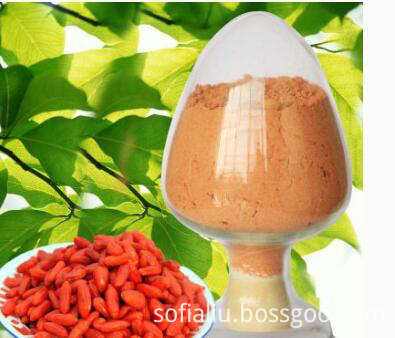1. Choose a variety. Local seedlings, melons and long seedlings are used to grow seedlings, such as pillow melon, melon, melon, dahongpao melon, and yellow melon. It is not suitable to use short varieties of melon.
2. Soak germination. The pumpkin seeds were sun-dried for 2 days and placed in hot water at 50°C. The stirring was continued. When the water temperature dropped to about 30°C, the seeds were soaked for 15 to 20 minutes and naturally cooled, and the soaking was continued for 7 to 12 hours. After soaking, the germination is maintained at a germination temperature of about 30°C, and germination occurs within two days.
3. Fine soil preparation. Choose pumpkin seedlings with good drainage, low groundwater level, and fertile soil. Width 1.5 meters wide, open a good ditch, groove width 30 cm, 15 to 20 cm deep ditch, four sides open drainage ditch.
4. timely sowing. In order to advance and extend the time to market, planting is generally started in March and can be sowed in batches until August. Open the ditch at a spacing of 20 cm, with a spacing of 10 cm, two seeds per hole, watering after sowing, and covering 2 cm of nutrient soil.
5. Apply fertilizer in time and apply enough base fertilizer. Put 2000 to 2500 kilograms of decomposed cow manure or 2500 to 3,000 kilograms of soil miscellaneous fertilizer and 20 kilograms of phosphate fertilizer per acre. After sowing, they were thoroughly immersed in decomposed manure or biogas slurry, then mulched with a mulch on the surface and compacted with soil. After emergence, let the seedlings grow under the membrane. Composting generally uses decomposed manure, livestock and manure, and must be chased to ensure sufficient supply of manure to promote the rapid growth of melon seedlings. After each harvest, timely reapplication of available nitrogen fertilizer to the plant promoted early onset of axillary buds.
6. Harvest in time. When the melon seedling grows to 40 centimeters high and has 5 to 6 true leaves, it can be harvested in batches, leaving 1 to 2 true leaves at the base to cut off the upper tender seedlings. The axillary buds grow to 40 cm and can be harvested, so repeatedly. Spraying 80 mg/kg of the "920" solution 5 to 7 days before each harvest can increase production by more than 30%. It can also reduce the formation of coarse fibers in the base section. The melon seedlings appear to be very young and soft, and their quality is improved.
Lycium sweet nature, Ping, owned by the liver and kidney, with nourishing liver and kidney, Liver eyesight effect, often with Rehmannia, chrysanthemum, yam, cornus and other drugs with the use. Modern medical research shows that it contains the carotene, betaine, vitamin A, vitamin B1, vitamin B2, vitamin C and calcium, phosphorus, iron, etc., with increased white blood cell activity and promote hepatocyte regeneration pharmacological effects of modern pharmacological experiments show that: Wolfberry has enhanced immune function, inhibition of tumor, lowering blood sugar, lipid-lowering, anti-fatigue and other functions. "Materia Medica remarks," that medlar can make "gas can be filled, blood can make up, Yang can be health, Yin can be long, rheumatoid can go, there are ten wonderful Yan." In the "Compendium of Materia Medica," the main Chinese wolfberry Efficacy summarized as "Kidney, lungs, eyesight," concise, in line with reality. Kidney Yin deficiency, lack of liver blood, causing Yaoxisuanruan, dizziness, tinnitus, nocturnal emission embolism, should use medlar.

Please feel free to leave us message.
Any inquiry would be replied within 2 hours on working days!
Production Specification Sheet
|
Product Name |
Country of Origin |
Ningxia in China |
|
ANALYSIS |
SPECIFICATTION |
TEST METHODS |
|
|
Product Name |
FD Goji Powder |
SD Goji Powder |
|
|
Color |
Orange-yellow or Orange-red |
Organoleptic Inspection |
|
|
Odor |
Characteristic, no other odor |
Organoleptic Inspection |
|
|
Taste |
Characteristic |
Organoleptic Inspection |
|
|
Characters/Appearance |
Fine particles or powder, slightly caking |
Organoleptic Inspection |
|
|
Impurity |
No visible foreign material |
Organoleptic Inspection |
|
|
Loss on drying/Moisture(%) |
NMT 10.0 |
NMT 8.0 |
GB5009.3 |
|
Total Sugar(glucose%) |
NLT 40.0 |
NLT 20.0 |
GB/T18672 |
|
Protein(%) |
NLT 4.0 |
NLT 4.0 |
GB5009.3 |
|
Leads(Pb) mg/kg |
NMT 0.5 |
NMT 1.0 |
GB5009.12 |
|
Arsenic(As) mg/kg |
NMT 0.3 |
NMT 0.5 |
GB/T5009.11 |
|
Total Plate Count(cfu/g) |
NMT 30000 |
GB4789.2 |
|
|
Coliform(MPN/100g) |
NMT 90 |
NMT 30 |
GB4789.3 |
|
Mold(cfu/g) |
NMT 25 |
NMT 20 |
GB4789.15 |
|
Yeast(cfu/g) |
NMT 25 |
NMT 20 |
GB4789.15 |
|
Pathogen |
Negative |
GB4789.4, GB4789.5, GB4789.10, GB/T4789.11 |
|
|
Shelf Life |
12 months if stored in a cool ventilated dry place |
|
Storage |
It should be stored under cool, well ventilated, and dry condition |
|
Package |
Internal: Double composite bag. External: Carton |
Save
Goji Powder
Herbal Goji Berry,Wolfberry Powder,Goji Berry Extract Powder,Goji Berry Freeze Dried Powder
Ningxia Wolfberry Goji Industry Co.,ltd , https://www.nx-wolfberry.com